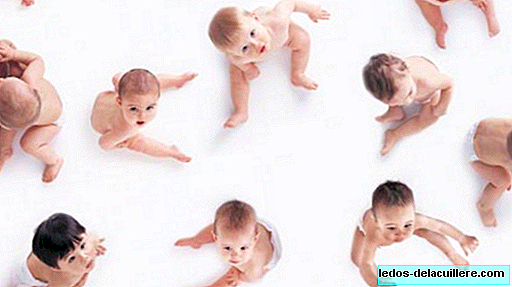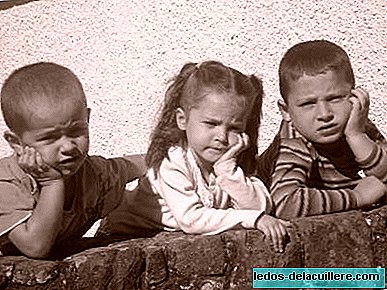One of the biggest concerns of parents is around growth of their children. They are common phrases like my son "has fallen small," or "is much shorter than his classmates." We often compare them as if growth should be even for all children of the same age, but the truth is that each child has their own individual growth rate.
Growth is the most characteristic biological process of childhood. In the first years of life a rapid increase in the height and weight of the child occurs, but it is not a constant process. Taking into account the pace or speed of growth, we can divide it into four stages of growth in children.
First year: accelerated growth stage

At birth, humans measure an average of 49.5 centimeters. The average size of boys at birth is 49.9 cm and 49.1 cm in the case of girls.
If we talk about percentiles, in the case of children the 1st percentile is a size of 45.5 cm and the 99th percentile is 54.3 cm. In girls, the 1 percentile is 44.8 cm and the 99 percentile is 53.5 cm. All sizes that are within these values are considered normal.
Each baby is conditioned by genetic factors or circumstances that have been able to affect uterine growth and that is what makes the size vary at birth.
On average, during the first year the child triples the birth weight and grows about 25 centimeters, that is half of what he measured at birth, a growth that will not be repeated in the rest of life.
An average height increase of two centimeters per month is estimated, although the growth is not uniform, but increases more rapidly during the first months and slows down as the child approaches the year of life.
Thus, on reaching one year, the child can reach 75 centimeters on average. The proportion should be calculated according to the size of the baby at birth. That is, a baby who at birth measured 48 centimeters, it is estimated that half a year, 24 centimeters, will increase by one year, that is, approximately 72 centimeters.
Two and three years: transition stage
During the second year, the child will grow some 12.5 centimeters on average, approximately one centimeter per month, although it is not necessarily uniform growth.
During the second year it is estimated that it will grow more or less than half the year before. But you don't have to get obsessed if a month didn't grow what was growing, the important thing is to see that the child is growing more or less constantly.
By the third year, growth slows down and they grow an average of 8 centimeters.
From 4 years: slow growth stage

The interval between 3-4 years and the onset of the pubertal stretch is the period of time in which children grow more stable.
The progressive decrease of growth rate is maintained slowly but continuously, which will last until the beginning of puberty.
Between three and four, an average of 7 centimeters will grow, between four and five, 6 centimeters, and from 6 years an average of 4 centimeters per year. The weight gain is maintained at about 2-3 kilograms per year.
The daily energy needs are 80-90 kcal / kg / day, which is approximately 1800 Kcal / day in children aged 4-6 years and 2400 kcal / day for children aged 7 to 10 years.
We must take into account, at this stage, as well as in the other stages, that there are determining factors that influence the growth of children such as: genetics, food, the endocrine system, diseases and physical exercise practiced by the child .
From 12 years: puberty
Puberty is the last stage of important growth in which the child experience accelerated growth again. It is accompanied by important maturational changes that coincide with the process of sexual maturation. It involves the maturation of the human body for the development of sexual characters in order to achieve ovulation or spermatogenesis. It is not something that happens in a day, but it takes years to establish itself, and it does so little by little.
This stage lasts about 6 years showing an average weight gain close to 30 kilos. The maximum growth rate can reach up to 12 cm / year in men and 9 cm / year in women. The development, which concludes the stage of childhood, usually occurs on average at 12 years in girls and at 13 years in boys.












